3200Views 37Comments
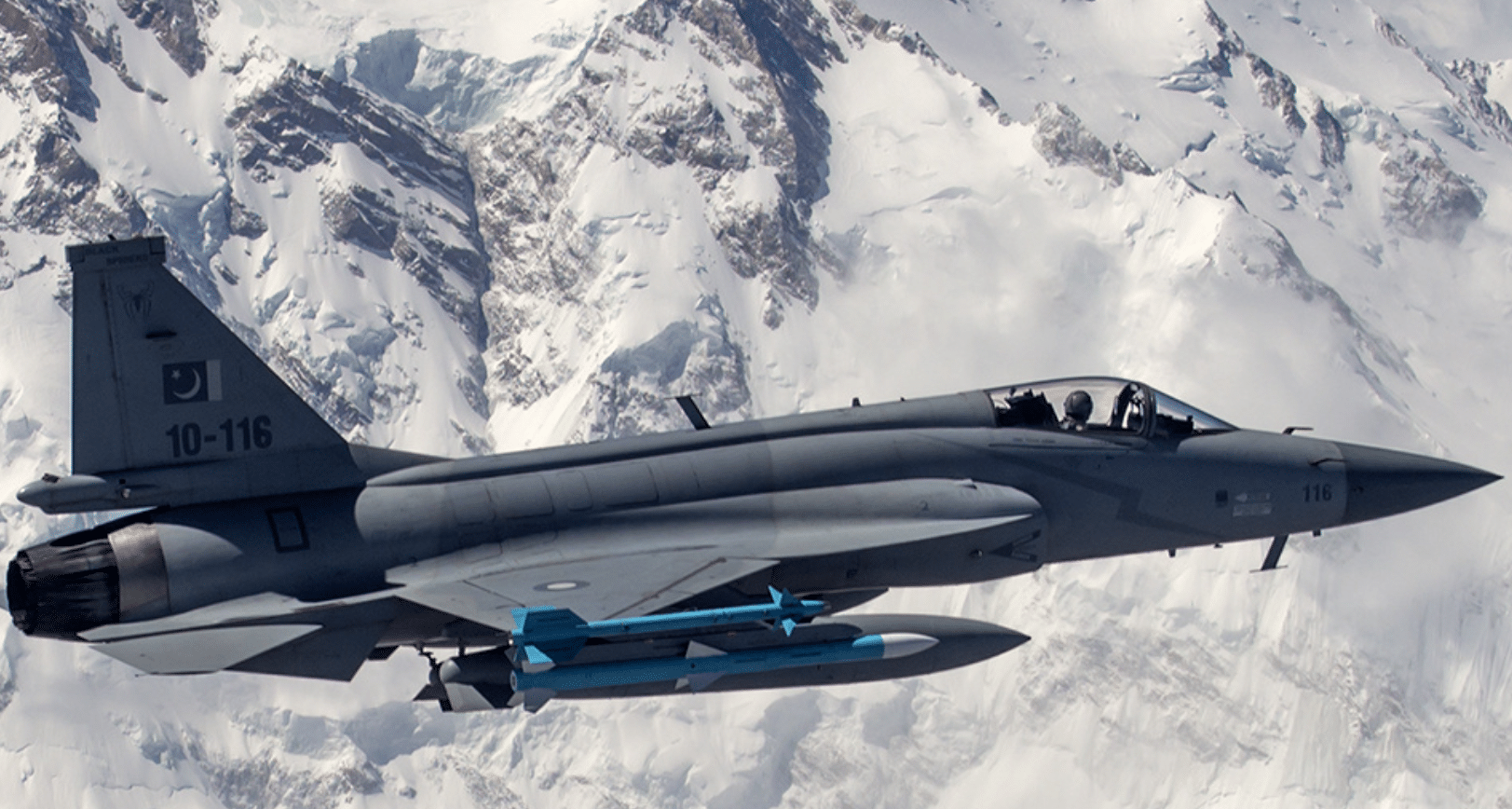
CAC/PAC JF-17 Thunder: Is Pakistan’s Mainstay Fighter Any Good?
Collaboratively produced by the Aviation Industry Corporation of China (AVIC) and Pakistan Aeronautical Complex (PAC), the JF-17 Thunder lightweight multi-role fighter is the emerging mainstay fighter platform of the Pakistan Air Force (PAF). Borne from the PAF’s need for an adept and affordable backbone fighter unencumbered by external, particularly Western, supplier costs and pressures, the JF-17 is also Pakistan’s gateway to aircraft manufacturing, custom integration and design and development work.
Background on the JF-17 Thunder
In 1995, PAC signed a memorandum-of-understanding (MoU) with the AVIC subsidiary Chengdu Aircraft Industry Group (CAIG) to co-develop and co-produce the JF-17, then known as the FC-1 and Super-7. The first Super-7/FC-1 prototype (renamed ‘JF-17 Thunder’) rolled-out from CAIG’s facilities in May 2003. In August 2003, the JF-17 prototype (PT-1) had conducted its maiden test flight in China. Development of the JF-17 airframe continued, with PT-4 incorporating noticeable changes, most notably the inclusion of diverterless supersonic inlet (DSI) and leading-edge root extensions (LERX).
Under the co-production workshare agreement with AVIC, PAC would manufacture 58% of the airframe’s subassemblies, including its wings, horizontal stabilizer and vertical tail. The remaining 42% – including the fuselage – would be sourced from CAIG. However, final assembly would take place in PAC, which – via its Aircraft Manufacturing Factory (AMF) – has the capacity to rollout 25 JF-17s per year. In 2005, PAC began manufacturing certain components. By 2009, it had ramped up to manufacturing its share of the airframe.
The JF-17 entered PAF service in 2010 by replacing the PAF No. 26 squadron’s Nanchang A-5 Fantan attack aircraft. In 2011, the second (and final) A-5 squadron, No. 16, also switched over to the JF-17. The No. 16 and No. 26 operate the JF-17 Block-I, which was introduced to primarily deploy beyond-visual-range air-to-air missiles (BVRAAM), so as to bolster the PAF’s air defence capabilities.
In 2013, PAC and AVIC had begun manufacturing the improved JF-17 Block-II. The JF-17 Block-II introduced in-flight refueling capabilities through a removable hose-and-drogue probe and increased oxygen supply for longer-endurance flights. The JF-17 Block-II achieved full operational capability (FOC) in 2015. Since then, the PAF’s No. 2 and No. 14 squadrons had swapped their Chengdu F-7Ps for JF-17 Block-II fighters. As of 2017, the PAF has also certified the deployment of precision-guided and stand-off range munitions from the JF-17, specifically the Range Extension Kit (REK) and C-802 anti-ship missile. PAC will also integrate the ASELPOD electro-optical targeting pod from Turkey’s Aselsan, which will enable the JF-17 to guide munitions against fixed and moving targets as well as undertake reconnaissance roles.
By September 2017, PAC rolled-out 90 JF-17 Block-I and Block-II fighters. These have been deployed with four frontline squadrons and a fifth unit at the PAF’s Combat Commanders School (CCS). The PAF had originally intended to acquire 100 JF-17 Block-I and Block-II fighters to help supplant 190 legacy F-7P and Mirage III/5 fighters. The PAF envisages equipping the JF-17 with the same kinds of air-to-surface and air-to-air munitions found on contemporary platforms, be it BVRAAM, WVRAAM, laser-guided bombs (LGB), precision-guided bombs (PGB), anti-ship missiles and, eventually, air-launched cruise missiles and various other stand-off range munitions (e.g. glide bombs and anti-radiation missiles).
Klimov RD-93: The JF-17’s Engine
For the final design, the PAF opted to use the Klimov RD-93 turbofan engine from Russia. The RD-93 is an afterburning turbofan engine with digital electronic engine control (DEEC). Its thrust (with afterburner) is 85.3 kN (8,700 kgf). The RD-93 is a variant of the Klimov RD-33, which powers the Mikoyan MiG-29. The JF-17 will be using the RD-93 for the foreseeable future, but PAC did not dismiss an engine change for the program. The Klimov RD-33MK and Guizhou WS-13 were listed as potential options.
The JF-17’s Avionics and Weapons Suite
In the cockpit, the JF-17’s human-machine interface (HMI) comprises of three multi-function displays (MFD), hands-on-throttle-and-stick (HOTAS) interface and head-up display (HUD). The JF-17 Block-I had used a hybrid flight control system: bank and yaw were managed mechanically and pitch electronically.
The JF-17 Block-I came armed with the SD-10 BVRAAM, which was guided by the Nanjing Research Institute of Electronics Technology (NRIET) KLJ-7 multi-mode X-band pulse-Doppler radar. The NRIET KLJ-7 is capable of displaying 64 search targets in the Range-While-Search-mode and tracking eight targets under track-while-scanning (TWS) mode. It can simultaneously engage two targets with radar-guided air-to-air missiles, such as the SD-10 BVRAAM. The Block-I and Block-II are also armed with the PL-5EII within-visual-range air-to-air missile (WVRAAM).
The Future of the JF-17
Having realized the JF-17’s preliminary goal of being an affordable and adept backbone fighter, the PAF is now steering the JF-17 to become its qualitative driver. Historically, imported fighters from the West were viewed as means to introduce new-generation systems and capabilities to the PAF fleet, but with the rising cost of importing such arms, the PAF has staked that essential role to the forthcoming JF-17 Block-III.
The PAF expects to see the JF-17 Block-III enter production in 2019 or 2020. The JF-17 Block-III will utilize an active electronically-scanned array (AESA) radar (see Quwa’s brief for background information on AESA radars), which will imbue the JF-17 with enhanced defensibility against electronic warfare (EW) jamming. This will join an integrated electronic countermeasures (ECM) and EW suite along with a helmet-mounted display and sight (HMD/S) system. The JF-17 will also be configured with a high off-boresight (HOBS) AAM (see Quwa’s background briefs on HOBS AAM and HMD/S for context). The JF-17 Block-III will also eschew the hybrid flight control system for a three-axis fly-by-wire (FBW) flight control system.
Bridging the JF-17 Block-II and the JF-17 Block-III is the two-seat JF-17B. The JF-17B made its maiden test flight in April 2017. The two-seat variant incorporates several design changes to the JF-17 Block-I/II, among them a swept-back vertical stabilizer. The first JF-17B will join the PAF in December 2017.
The following specifications are from an upcoming marketing brochure from PAC for the JF-17. The Profile article above draws exclusively from various statements from PAF officials, PAF-sanctioned journalists and PAC’s upcoming marketing material. Excerpts from PAC’s brochure can be found below.

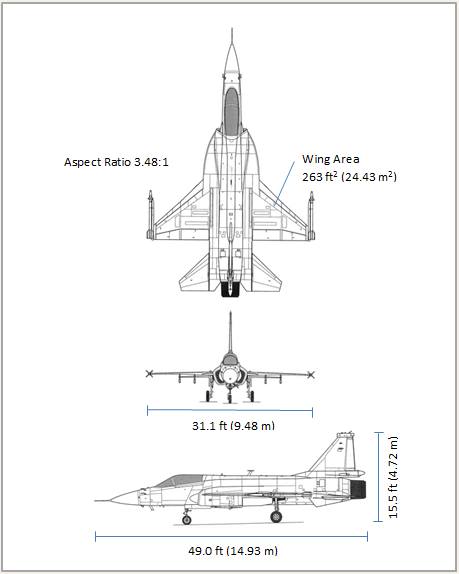
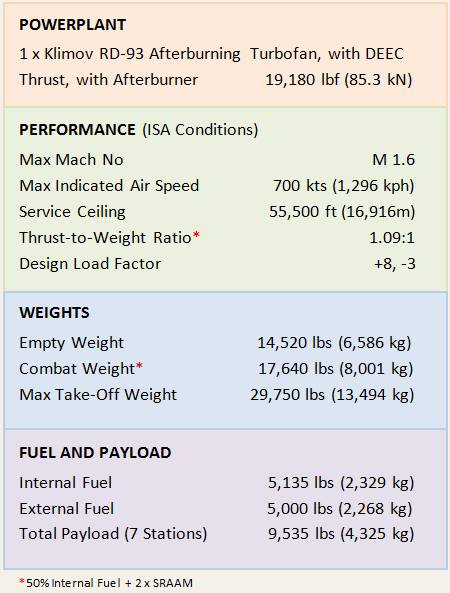
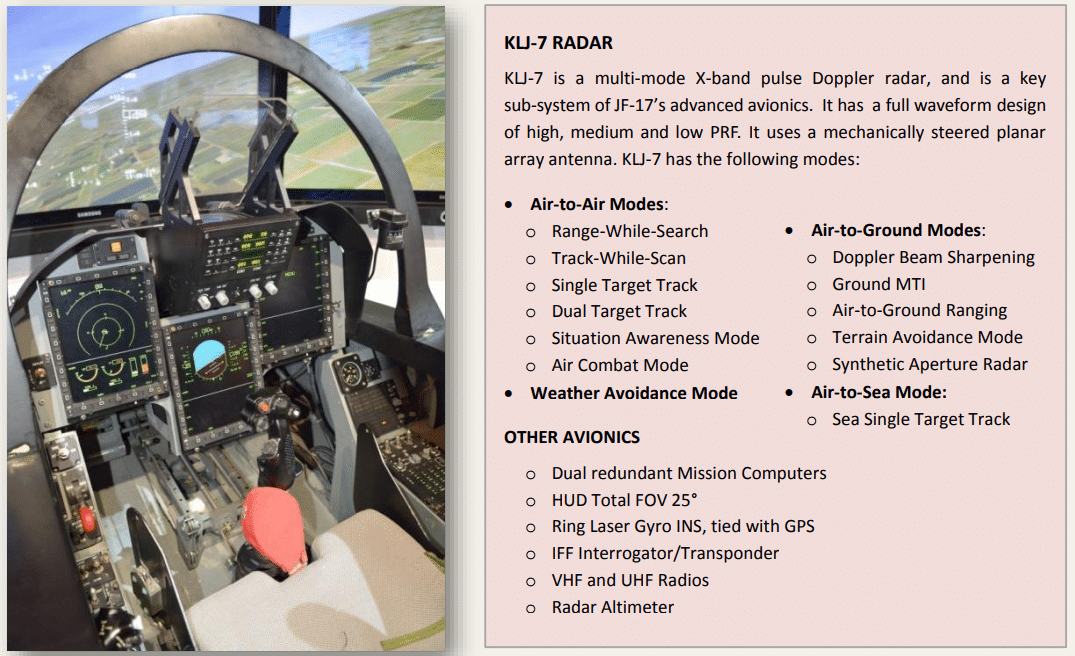
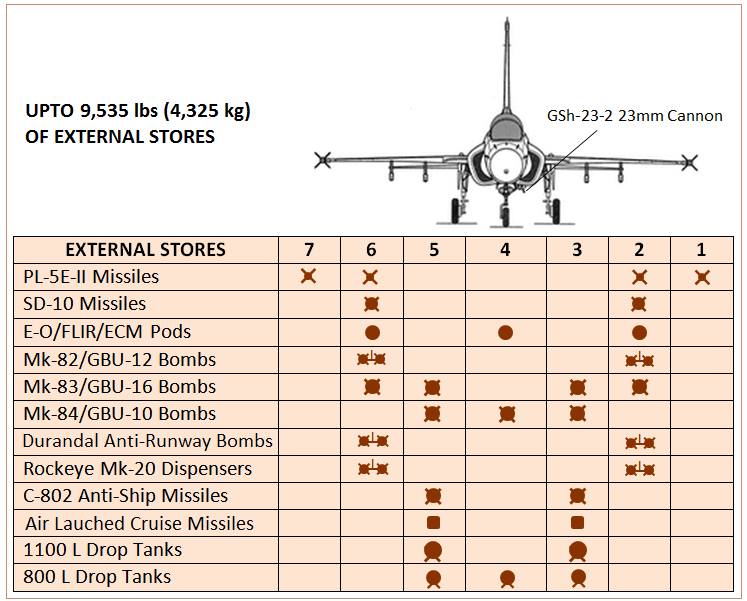
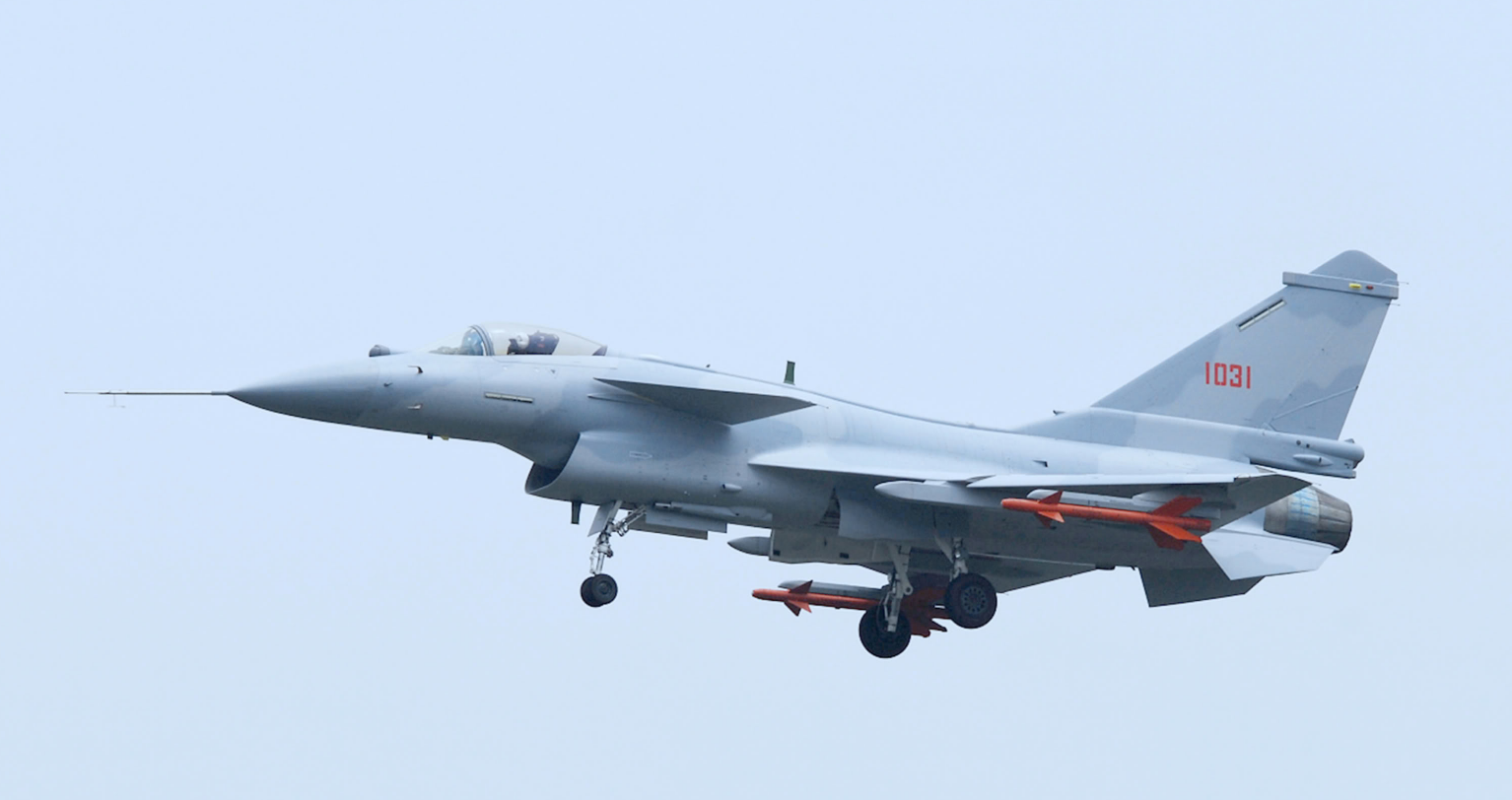
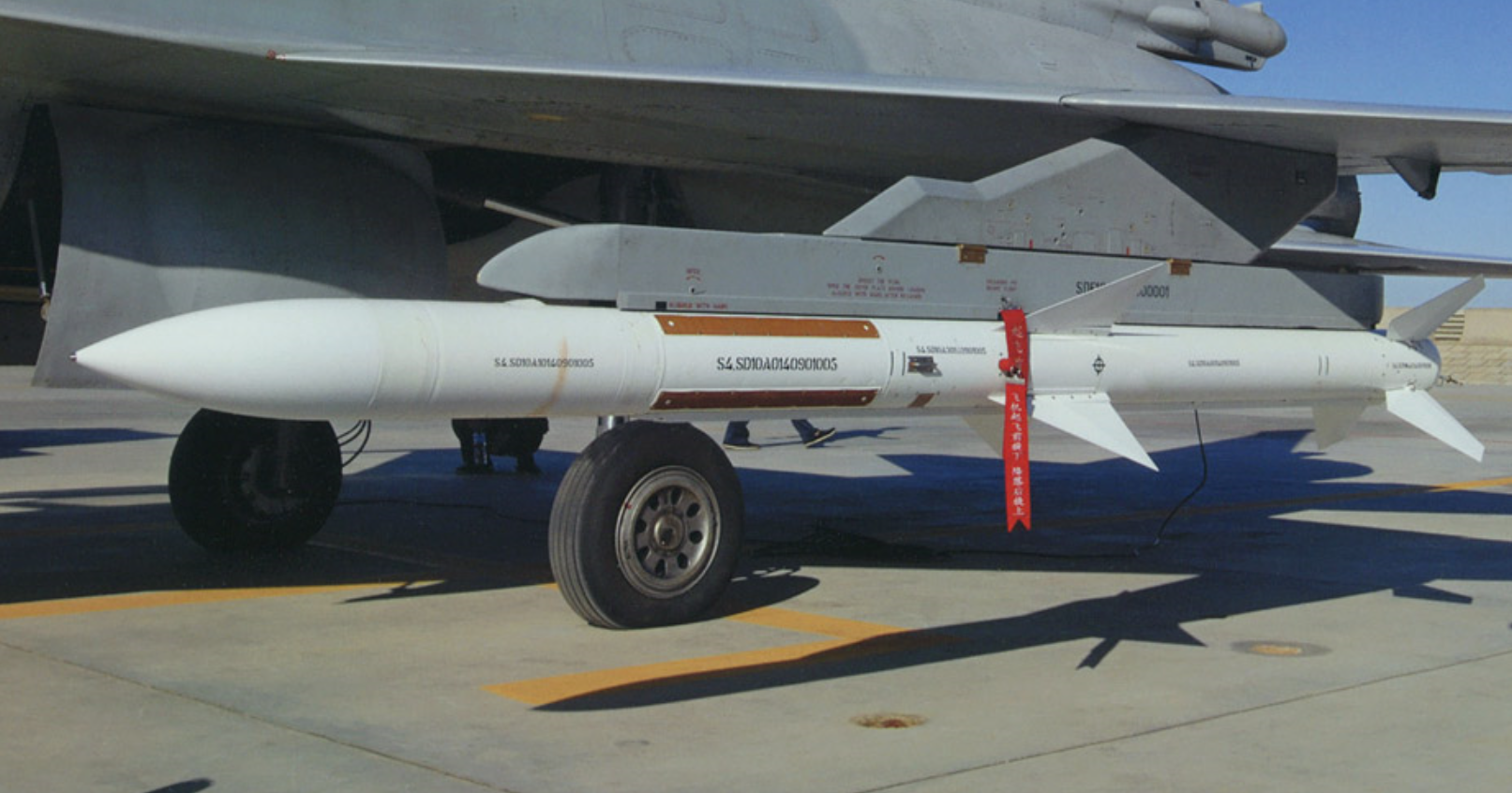
37 Comments
by Shershahsuri
Mr.Bilal can you say something about new KLJ-7 v2. What are its specification over KLJ-7?
by Waqas Ahmed
Dear Admin, what is the status of digital fly by wire in JF-17
by Hammad Hassan
But I thought that Pakistan would begin to receive block 3 in 2019 and.2020??? And we were wxpected to order these in 2017……!!!! Bilal please elaborate
by Lasit
pls do a JF – 17 vs LCA Tejas specs review.
there are too many cat fights between the Indians and Pakistanis on this.
by tauqeer
it seems that every thing is final & final product will be available in 20019-20. some one from PAF should come forward and give insight about final air frame of Jf-17. Current status about engine selection which will be use in block III.
by MT
Mod wrote on it last year
Jul 3, 2016 Bilal Khan –
DISCUSSION: THUNDER AND TEJAS
http://quwa.org/2016/07/03/discussion-thunder-tejas/
by sami shahid
Nice & interesting…. it would be great if PAC installs electro-optical targeting pods purchased from Turkey on JF-17 B. Would be amazing if PAC finds & installs a good Mach 1.8 engine on JF-17 B & block 3. Anyway, this article was helpful.
by Zuhair W. Khan
U have saved me from hard work. Thanks a million for writting this artcal.
by Zuhair W. Khan
A powerful engine that can produce an additional 0.2 machs is much needed. Hopefully we will see it in the Block III.
by Shakeel
This was a good Eid special from Bilal. Have a nice one Quwa readers.
Best wishes.
by jigsaw
Only indians are obsessed about doing comparisons here and carrying them forward into “cat fights” to justify something. Really it’s not even the last thing on anyone’s mind in Pakistan. What will that achieve and for that matter will you even accept those comparisons? What matters is one is in active duty and on FABs, other is not.
by Danish Bhat
Compare block 2 and block 3 jf17 with tejas mark 1 and 1A please.
by Randian Tv
PAC looking to develop gunship helicopters. Check out other articles on this web.
by Randian Tv
As far as I know WS-13 is Mach 1.8
by jigsaw
…AND here it comes. First Indian denial: I won’t listen. I won’t learn. I won’t change my behaviour. I will remain a stubborn egoistic Bharti and I will continue to disagree on everything about Pakistan because that’s my sole purpose of existence.
Before the argument was if JF-17 is indigenous or not. When that cleared up…it’s about JV’s.
by Bilal Khan
We couldn’t take many liberties into guessing stuff for this specific article. It’s for reference so we decided to keep it as close to official and up-to-date as possible.
…but if I could guess, since it is from a marketing brochure, any exportable ALCM will have to be shorter range than the Ra’ad (i.e. MTCR compliant).
by Lasit
Here you come.. do some meditation to cool off your head
by Khan Majeed
Very good profile on JF-17 Thunder fighter aircraft. I wish I could be part of the engineering team. Well done Pakistan.
by OSD
The issue here is that if the LCA Tejas comes out second, Indians will start trolling this website.
In any case, there is no point is doing this comparison as the Tejas has not even entered service as yet. Its specs are of not confirmed and it can not defend India from the drawing board.
by jigsaw
http://nation.com.pk/national/31-Aug-2017/technological-development-in-pakistan-s-domestic-conventional-defense-industry-itu-study-on-jf-17-thunder
Something we’ve been saying about JF-17 program time and again.
by Lasit
Pls read the links below
http://quwa.org/2016/07/03/discussion-thunder-tejas/
https://www.google.co.in/amp/m.economictimes.com/news/defence/first-squadron-of-lca-tejas-inducted-into-indian-air-force-8-things-to-know/amp_articleshow/53001820.cms
Do let me know your thoughts after reading the articles
Cheers
by jigsaw
I will tell you mine.
First you should produce a single Indian article where a single word in favour of JF-17 was EVER written. In fact the second link simply wraps up the whole vs thingy with a blanket statement: “Hence, even though they were built along a similar timeline, it is not really fair to compare them.” Perhaps you should have read that and kept it shut, but no – that’s too much to ask, so… it just goes to show the extreme bias you are blessed with. The first one you are referring to is writer’s opinion, since it’s a discussion – not a news story but still it was kept balanced as far as the paper unrolls. Now that’s another thing that the comparison is between a plane being developed (God knows whatever that means) vs. a plane actually performing duties in all roles on FABs. The first 2 blocks were compared against a plane that never made it to squadrons except to ranks of rejection. The block 3 is being compared against a plane that will never make it in time and remain a lab project most likely. Now people like Bilal can be nice to you Indians and stick to paper comparisons, but it does not change the fact that a rejected technology demonstrator (in favour of Rafales and F-16s, heck it can’t even replace Mig-21s without IAF worrying its diapers out) is being pitched up against a real jet with real life responsibilities.
Now all these comparisons in particular by Indians mostly focus on how JF-17 does not have a digital full FBW goodies and composites, or some other certain tech. I really want to see your faces when JF-17 block 3 comes out with all that tech and more. Start making up your excuses now, since you won’t have anything left to whine about when it gets an AESA, HMD, 5th gen WVR missiles, a new engine, composites, PODs, and other 4.5th gen tech. Really that’s probably the last year or two you have to ask of these. I’m predicting your mouths zipped and hearts burn when JF-17 block 3 comes out. Keep watching – because it is NOT a lab project demonstrator.
by Asif Khan_47
It is a good article. I want to say since I am a post-doc student the references most of them are of quwa by quwa for quwa. In academic line this doesn’t work. I remember during my Masters thesis at University of Maryland I had to almost rewrite my thesis three times because I failed to provide references from more than 15 different sources. Eventually my advisor told in the most empathic way that I will never be able to get my thesis through if I don’t provide reference after references.
Bilal you do a wonderful job but in this field there are two ways to write: Provide references and even cross reference for almost all of the data and information you provide and establish your credentials this way and second you are in possession of classified information and you skirt around and write with authority while not exposing the classified material.
JF-17 inception was via Sabre II in 1986 with PW1129 engine https://www.flightglobal.com/pdfarchive/view/1987/1987%20-%201745.html?search=grumman%20sabre%20II
Keep up the good work!
by Abdullah Aman
Pakistan produce 60% of the parts not just assumable of JF-17 which is going up to 80% from next year
https://defence.pk/pdf/threads/twitter-q-a-on-jf-17-thunder-program-with-horus-oscar.513417/#post-9786656
U still don’t want to believe it’s your choice
by John Rue
It will sound threatening if PAC could double its production. Might be a bit aggressive but with 50 plans an year , producing 250 planes in 5 years looks more promising for F-7, Mirage and other junk’s replacement. Currently its 20 or so per year. With that pace it will take 20 years to produce 400 jets.
So PAF has gone with double seater , I hope one day they wake up and realize that investing in twin engine plan with long range capabilities will replace mirages(J something, that long range twin engine bomber- SU27’s chinese remake).
by Lasit
My Dear Jigsaw,
there are multiple Indian defense article which highlighted key strength of the JF – 17 program. below is the link for your easy reference
https://www.livefistdefence…
regarding the status of Tejas induction as per today(02/09/2017) , here is the status – 3 plans are inducted to sq-45. SP-1,2,3 are already inducted, SP4 completed certification and will join within this month, SP-5 under certification and process and SP-6 going through flight test. production up SP-12 numbers are at different stages. as per the plan IAF will complete Sq-45 by March-April-2018. HAL #2 production line started last december and we will have #3 production line active by November 2017. it is expected that the batch order of 123 Tejas will be delivered by 2022.
Uttam AESA radar is getting tested for final certification on the SP3 sample. every Tejas Mk1.A after #18 will come fitted with DRDO Uttam AESA or Israeli Elta 2052 AESA. the previous sample will be fitted with AESA later on.
http://idrw.org/its-uttam-a…
i am sure that Pakistan will make great stride forward in the JF-17 Block 3 in AESA Radar, engine, Target Pod and HMD/S etc. but unfortunately i could not find any details of any of the contracts for these subsystems. Please help me out if you have any insights.
in fact in 2010, Pakistan Air Force’s Air Chief Marshal Rao Qamar Suleman announced that KLJ-7 radar will be built at Pakistan Aeronautical Complex (PAC), in Kamra, north of Islamabad. so i believe, by now you may already have a big inventory of the AESA radars ready to be fitted into JF-17.
Hope my answer can satisfy your hunger for knowledge
Regards
by umar rana
where?????any link???
by jigsaw
You will not find any details or any contracts unless the PAF announces it. This is not a program initiated or run by the Pakistani government but by PAF itself, so details are scarce because that’s how PAF wants it to be. According to PAC website, PAC is co-producing the KLJ-7 radar for block 1 and 2. You may visit it. But KLJ-7 is not the AESA but the conventional radar. KLJ-7A is the AESA variant for block 3. Due to source codes sharing and cross platform weapon integration, this is the most likely selection on JF-17 block 3.
by Abdul Rashid
AVIC of China has reportedly developed their own air-cooled AESA radar. See link below:
http://quwa.org/2017/05/22/avic-completes-development-air-cooled-aesa-radar/
There had been speculation and counter-speculation regarding JF-17 III having an enlarged nose cone to accommodate an AESA radar. I wonder how easily Block I/II are upgradeable to Block III spec. If the dual-seater JF-17B is an indication of design changes on the Block III, I don’t see how earlier blocks can be modified to III without neccessiating a major re-build. Time will tell, but Block I/II might have some of the advanced sub-systems of Block III and other changes that can be carried out within a ”reasonable” budget and time frame. AVIC radar might be more suited to Block I/II.
My guess is PAF will eventually end up with two distinct JF-17s. The Block III and substantially upgraded Block I/II to a near-block III standard.
All speculation my part however. Your thoughts?
by jigsaw
I guess we are all making calculated and educated guesses here based on whatever info is available. Can’t really say what PAF will settle on but KLJ-7A seems like the natural successor here for block 3. Or as you say they may go for integrating the other one of earlier blocks (or even block 3, i can’t say for sure). I don’t think AESA is currently the priority for block 1 and 2s. PAF is more or less inspired from Gripen from the start of JF-17 program and will try to create a Gripen E first before thinking about earlier blocks. They’re looking at around 100 – 150 block 3s to be the spearhead for PAF prime roles. I agree definitely some 4.5th gen tech will find its way into earlier blocks but it does not seem to be the focus rightaway.
On a lighter note i seriously hope block 3 does NOT take the shape of JF-17B. It’s one ugly plane i’ve seen. Hopefully, a much cleaner and mature look.
In any case, even if earlier blocks are not refitted with AESA radars, it’s alright. After all, we’ll continue to fly those 70ish F-16s with conventional radars until 2030 or little more. They just might let it go in favour of building more block 3s.
by Steve
Bit off topic but topical; Pakistan needs 200KT-2MT thermonuclear weapons like NK and also ICBM. We need proper deterrance and a long reach as we have many enemies, and are living in a dangerous world. Many examples of weak nations being crushed by strong nations are before us. Don’t know if JF-17 are configured for a strategic role or it is only Mirages/F-16. I would be surprised if SPD have not already explored this as Mirages are getting old now, and F-16 have a different role.
by mazhar
To integrate AVIC KLJ-7A into Block I & II, don’t you think a more powerful engine is required? That’s what had been mentioned in previous discussions about Block III that it needs more powerful engine to accommodate an AESA radar. Please share your thoughts about it.
by Bilal Khan
No sign of an engine switch in Block-III, but weight reduction is probable. The JF-17B swapped out the hybrid flight control system with a three-axis system, which implies removal of some physical hardware (reducing weight and freeing space). For the JF-17B, they also found more room to make up for the fuel lost by placing the second seat. If you factor out the second seat and hold the enlarged JF-17B airframe as is, you might get a bigger and lighter jet than the JF-17 Block-I/II. The rest depends on how efficient the AESA radar is in terms of weight and power-usage.
by mazhar
I am sure Bilal, weight reduction will open the door in Block I&II to allow more power to accommodate KLJ-7A. This will be a great achievement by PAC,if they decide to go ahead with this plan. I can imagine how awesome it can be with 200+ fighters with AESA. Fingers crossed.
by Jack More
Less capable Jet..said by its Chief designer.
by SS_IND
So how do you feel selling the JF-17 to Myanmar ??
by Jahanzaib Gulfam
reference?